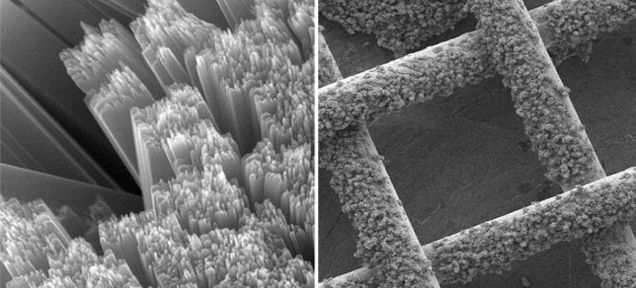Researchers may have created the very first solar battery. Scientists have succeeded in combining a battery and a solar cell into one hybrid device, which could be huge in terms of renewable energy capture and storage.
“The state of the art is to use a solar panel to capture the light, and then use a cheap battery to store the energy,” said Yiying Wu, professor of chemistry and biochemistry at Ohio State. “We’ve integrated both functions into one device. Any time you can do that, you reduce cost.”
The invention tackles a long-lived problem by eliminating the loss of electricity that occurs when electrons travel between a solar cell and external battery; in most of today’s technology about 80 percent of electricity is lost during this process.
“Basically, it’s a breathing battery,” Wu said. “It breathes in air when it discharges, and breathes out when it charges.”
Cells are normally made from semiconductor panels, which block air from entering the battery. Doctoral student Mingzhe Yu designed a permeable mesh solar panel from titanium gauze, allowing air to easily pass through the material while the rods capture energy from the Sun.
Most of today’s solar panels contain four electrodes; this new device only requires three.
During charging, when light hits the device’s mesh solar panel it creates electrons, which work to decompose lithium peroxide into lithium ions and oxygen. After this process takes place the oxygen is released and the lithium ions are stored in the battery as lithium metal after capturing the electrons. Once the battery discharges it chemically consumes oxygen from the air, re-forming lithium peroxide. An iodide additive acts as a “shuttle” to carry the electrons between the battery electrode and breathable mesh.
To test the device the researchers repeatedly charged and discharged the battery while using X-ray photoelectron spectroscopy to determine how well the electron material survived, indicating battery life. The team determined the battery life will most likely be similar to those of devices already seen on the market.
Agencies/Canadajournal
 Canada Journal – News of the World Articles and videos to bring you the biggest Canadian news stories from across the country every day
Canada Journal – News of the World Articles and videos to bring you the biggest Canadian news stories from across the country every day



